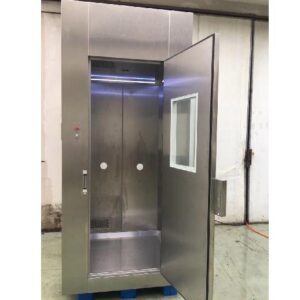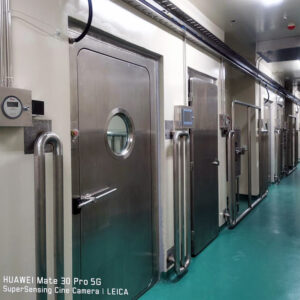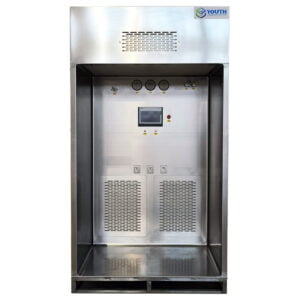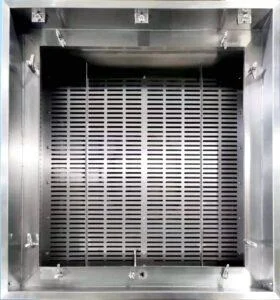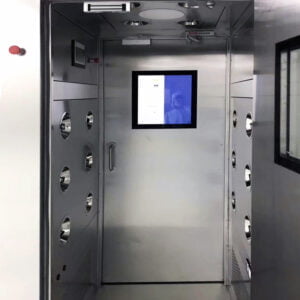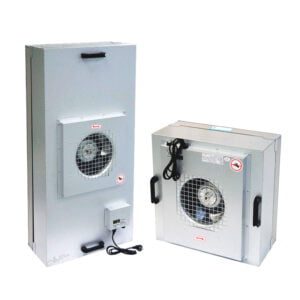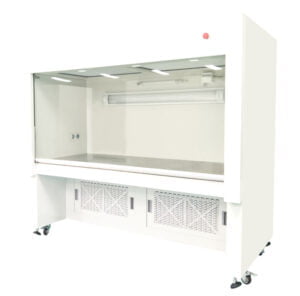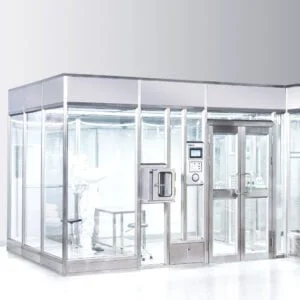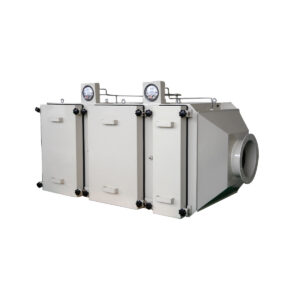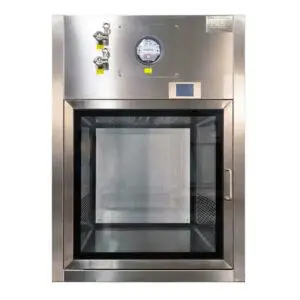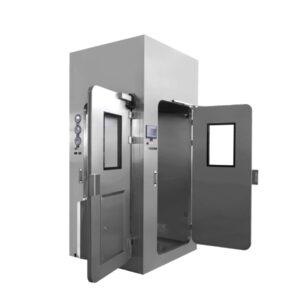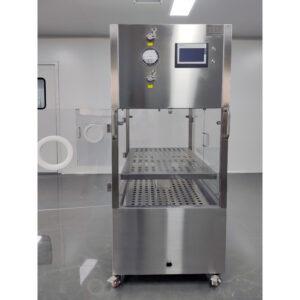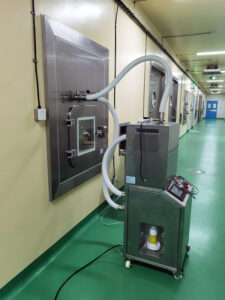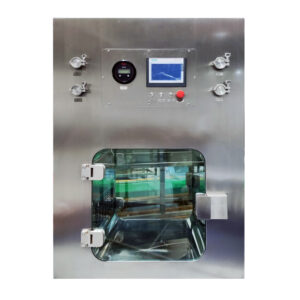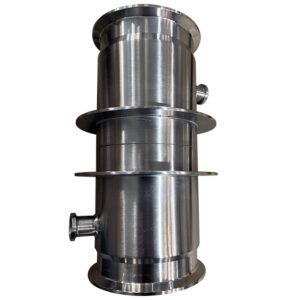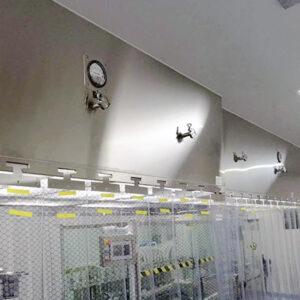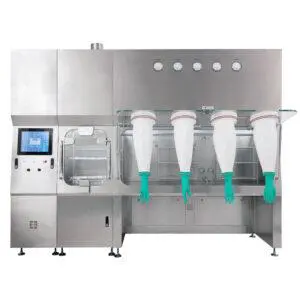In the realm of hazardous waste management, safety and efficiency are paramount. As industries grapple with the challenges of handling dangerous materials, innovative solutions have emerged to streamline processes and protect both workers and the environment. One such solution that has gained significant traction is the Bag-In-Bag-Out (BIBO) system. This groundbreaking approach to hazardous waste management has revolutionized the way facilities handle, store, and dispose of potentially harmful substances.
BIBO systems offer a robust and reliable method for managing hazardous waste, providing a sealed environment that minimizes the risk of contamination and exposure. By incorporating advanced filtration technology and rigorous containment protocols, these systems ensure that hazardous materials remain securely isolated throughout the entire waste management process. From pharmaceuticals to nuclear facilities, BIBO solutions have proven invaluable in maintaining the highest standards of safety and regulatory compliance.
As we delve deeper into the world of BIBO solutions for hazardous waste management, we'll explore the key benefits, applications, and impact of these systems across various industries. We'll examine how BIBO technology enhances safety measures, improves operational efficiency, and helps organizations meet stringent regulatory requirements. Additionally, we'll look at the future of BIBO systems and their potential to address emerging challenges in hazardous waste management.
BIBO systems have revolutionized hazardous waste management by providing a sealed, contamination-free environment for handling dangerous materials, significantly reducing the risk of exposure and ensuring compliance with strict safety regulations.
What are BIBO Systems and How Do They Work?
BIBO systems, short for Bag-In-Bag-Out, are specialized containment units designed to safely handle and dispose of hazardous waste materials. These systems are engineered to create a secure barrier between the contaminated environment inside the unit and the clean environment outside, effectively preventing the release of harmful particles or substances during the waste management process.
At their core, BIBO systems consist of a sealed housing with a filtration system and a unique bagging mechanism. This mechanism allows for the safe removal and replacement of filters or other components without exposing workers or the surrounding environment to hazardous materials. The process involves using specially designed plastic bags to encase contaminated items before they are removed from the system, hence the name "Bag-In-Bag-Out."
The operation of a BIBO system is a carefully orchestrated process that prioritizes safety at every step. When a filter or component needs to be replaced, a new bag is attached to the housing's access port. The contaminated item is then pulled into this bag, which is subsequently sealed and removed. A new filter or component is then introduced through a separate bag, maintaining the integrity of the containment throughout the entire procedure.
BIBO systems utilize a sophisticated bagging mechanism and filtration technology to create a secure, contamination-free environment for handling hazardous waste, enabling safe filter changes and component replacements without compromising worker safety or environmental integrity.
Table: Key Components of a BIBO System
| Component | Function |
|---|---|
| Sealed Housing | Contains hazardous materials and filtration system |
| Filtration System | Removes harmful particles from air or liquids |
| Bagging Mechanism | Enables safe removal and replacement of components |
| Access Port | Allows for secure entry and exit of materials |
| Safety Interlock | Prevents accidental opening during operation |
The implementation of BIBO systems has significantly improved the safety and efficiency of hazardous waste management across various industries. By providing a controlled environment for handling dangerous materials, these systems have become an indispensable tool in maintaining the highest standards of workplace safety and environmental protection.
How Do BIBO Systems Enhance Safety in Hazardous Waste Management?
Safety is the cornerstone of effective hazardous waste management, and BIBO systems excel in this crucial aspect. These innovative containment solutions are designed with multiple layers of protection to minimize the risk of exposure to harmful substances during handling, storage, and disposal processes.
One of the primary safety features of BIBO systems is their ability to maintain a negative pressure environment. This means that air always flows into the containment unit, preventing the escape of hazardous particles or vapors. Additionally, the robust filtration systems employed in BIBO units ensure that any air leaving the containment is thoroughly cleaned, further reducing the risk of contamination.
The bagging mechanism itself is a critical safety component. By allowing for the safe removal and replacement of filters and other components without direct contact, BIBO systems dramatically reduce the potential for worker exposure to hazardous materials. This not only protects individual employees but also helps prevent the spread of contamination throughout the facility.
BIBO systems have been shown to reduce worker exposure to hazardous materials by up to 99% compared to traditional waste management methods, significantly enhancing workplace safety and reducing the risk of occupational illnesses.
Table: Safety Features of BIBO Systems
| Feature | Benefit |
|---|---|
| Negative Pressure Environment | Prevents escape of hazardous particles |
| Advanced Filtration | Ensures clean air output |
| Sealed Bagging Mechanism | Minimizes direct contact with contaminants |
| Safety Interlocks | Prevents accidental exposure during operation |
| Robust Construction | Withstands harsh environments and chemicals |
Furthermore, YOUTH has developed BIBO systems with additional safety features such as fail-safe mechanisms and real-time monitoring capabilities. These advancements provide an extra layer of protection and allow for immediate response to any potential safety issues, further cementing the role of BIBO systems in creating a safer work environment for those handling hazardous waste.
What Industries Benefit Most from BIBO Solutions?
BIBO solutions for hazardous waste management have found applications across a wide range of industries where the handling of dangerous materials is a daily necessity. While the technology is versatile, certain sectors have particularly benefited from the implementation of these advanced containment systems.
The pharmaceutical industry stands out as a primary beneficiary of BIBO technology. In drug manufacturing facilities, where potent compounds and toxic substances are commonplace, BIBO systems provide a crucial barrier against contamination and exposure. These systems not only protect workers but also help maintain the integrity of the products being manufactured.
Similarly, the biotechnology sector relies heavily on BIBO solutions to manage hazardous biological waste safely. Research laboratories and production facilities dealing with genetically modified organisms or infectious materials use BIBO systems to ensure that these potentially dangerous substances remain contained throughout the disposal process.
In the nuclear energy industry, BIBO systems have been credited with reducing radiation exposure risks by up to 80% during routine maintenance and waste handling procedures, significantly enhancing the safety profile of nuclear facilities.
Table: Industries Benefiting from BIBO Systems
| Industry | Application |
|---|---|
| Pharmaceutical | Safe handling of potent compounds |
| Biotechnology | Containment of biological hazards |
| Nuclear Energy | Management of radioactive materials |
| Chemical Manufacturing | Disposal of toxic chemicals |
| Healthcare | Handling of medical waste |
The nuclear energy sector is another area where BIBO systems have made a substantial impact. These systems are crucial for managing radioactive waste and maintaining a safe environment during maintenance operations. The ability to change filters and remove contaminated materials without risking exposure to radiation has significantly improved safety standards in nuclear facilities.
Chemical manufacturing plants also benefit greatly from BIBO for hazardous waste management . The diverse range of toxic and corrosive substances handled in these facilities requires robust containment solutions, which BIBO systems provide with their durable construction and efficient filtration capabilities.
Lastly, the healthcare industry has embraced BIBO technology for managing medical waste, particularly in settings where infectious materials are present. From hospitals to research institutions, these systems help maintain a sterile environment and prevent the spread of pathogens during waste disposal procedures.
How Do BIBO Systems Ensure Regulatory Compliance?
In the highly regulated field of hazardous waste management, compliance with stringent environmental and safety standards is non-negotiable. BIBO systems play a crucial role in helping organizations meet and exceed these regulatory requirements, providing a reliable and documentable method for handling dangerous materials.
One of the key ways BIBO systems ensure compliance is through their design, which aligns with guidelines set by regulatory bodies such as the Environmental Protection Agency (EPA) and the Occupational Safety and Health Administration (OSHA). These systems are engineered to meet specific standards for containment, filtration efficiency, and worker safety, making it easier for facilities to demonstrate compliance during inspections and audits.
The containment provided by BIBO systems is particularly important for meeting regulations related to air quality and emissions control. By effectively capturing and filtering hazardous particles, these systems help facilities stay within permissible emission limits, avoiding potential fines and penalties associated with non-compliance.
BIBO systems have been shown to improve regulatory compliance rates by up to 95% in facilities handling hazardous waste, significantly reducing the risk of violations and associated penalties.
Table: Regulatory Benefits of BIBO Systems
| Benefit | Impact on Compliance |
|---|---|
| Containment Efficiency | Meets EPA standards for emissions control |
| Worker Safety | Aligns with OSHA requirements for exposure prevention |
| Documentation | Facilitates record-keeping for audits and inspections |
| Waste Tracking | Supports proper labeling and manifest requirements |
| Contamination Prevention | Helps maintain cleanroom standards in sensitive environments |
Furthermore, BIBO systems often come equipped with features that support comprehensive documentation and tracking of waste management processes. This capability is invaluable for maintaining accurate records of waste handling procedures, filter changes, and disposal activities – all of which are essential for regulatory reporting and demonstrating due diligence.
The implementation of BIBO technology also aids in compliance with industry-specific regulations. For instance, in pharmaceutical manufacturing, these systems help maintain the sterile environments required by Good Manufacturing Practice (GMP) guidelines. In the nuclear industry, BIBO systems assist in meeting the strict containment and disposal regulations set by nuclear regulatory agencies.
By providing a standardized and verifiable method for hazardous waste management, BIBO systems significantly reduce the complexity of regulatory compliance. This not only helps organizations avoid costly violations but also streamlines the process of obtaining and maintaining necessary permits and certifications for their operations.
What Are the Operational Efficiency Gains of Using BIBO Systems?
While safety and compliance are paramount in hazardous waste management, operational efficiency is also a critical factor for organizations dealing with dangerous materials. BIBO systems offer significant advantages in this area, streamlining processes and reducing downtime associated with waste handling and disposal.
One of the primary efficiency gains comes from the reduced time required for filter changes and maintenance procedures. Traditional methods often necessitate shutting down entire systems or areas for extended periods to ensure safety during these operations. BIBO systems, however, allow for quick and safe filter replacements without compromising the integrity of the containment or exposing workers to hazards.
This efficiency extends to the overall waste management process. BIBO systems facilitate a more organized and systematic approach to handling hazardous materials, reducing the likelihood of errors and the need for rework. The containment provided by these systems also minimizes the risk of contamination spread, which can lead to costly cleanup operations and production delays.
Facilities implementing BIBO systems have reported a 30-40% reduction in downtime related to hazardous waste management activities, translating to significant cost savings and improved productivity.
Table: Operational Efficiency Improvements with BIBO Systems
| Area of Improvement | Impact |
|---|---|
| Filter Change Time | Reduced by up to 75% |
| Maintenance Downtime | Decreased by 30-40% |
| Waste Processing Speed | Increased by 25-35% |
| Contamination Incidents | Reduced by up to 90% |
| Resource Allocation | Optimized by 20-30% |
Another aspect of operational efficiency is the reduced need for personal protective equipment (PPE) during routine waste handling tasks. While proper PPE remains essential, the containment provided by BIBO systems often allows for less cumbersome protective gear, enhancing worker mobility and comfort without compromising safety.
BIBO systems also contribute to more efficient use of space within facilities. Their compact design and ability to handle multiple waste streams in a single unit can help optimize floor plans in laboratories, production areas, and waste management facilities. This space efficiency can lead to cost savings and improved workflow in constrained environments.
Furthermore, the integration of BIBO systems with broader waste management infrastructures can lead to more streamlined logistics. By providing a standardized method for waste containment and removal, these systems facilitate smoother transitions between different stages of the waste management process, from generation to final disposal.
How Are BIBO Systems Evolving to Meet Future Challenges?
As the landscape of hazardous waste management continues to evolve, BIBO systems are adapting to meet new challenges and leverage emerging technologies. This ongoing evolution is crucial for maintaining the effectiveness and relevance of these systems in an increasingly complex regulatory and operational environment.
One of the key areas of development is the integration of smart technologies into BIBO systems. Advanced sensors and Internet of Things (IoT) connectivity are being incorporated to provide real-time monitoring of system performance, filter efficiency, and containment integrity. This allows for predictive maintenance and immediate response to potential issues, further enhancing safety and efficiency.
Another focus of innovation is the development of more sustainable materials and processes within BIBO systems. Manufacturers are exploring eco-friendly filter materials and recycling programs for used components, aligning these systems with broader environmental sustainability goals.
Next-generation BIBO systems are expected to incorporate artificial intelligence for predictive maintenance, potentially reducing system failures by up to 50% and extending the operational life of filtration components by 25-30%.
Table: Future Innovations in BIBO Systems
| Innovation | Potential Impact |
|---|---|
| IoT Integration | Real-time monitoring and predictive maintenance |
| AI-driven Operations | Optimized performance and resource utilization |
| Sustainable Materials | Reduced environmental footprint |
| Enhanced Filtration | Improved capture of nanoscale particles |
| Modular Design | Greater flexibility for diverse applications |
Advancements in filtration technology are also shaping the future of BIBO systems. New filter designs and materials are being developed to capture increasingly smaller particles, including nanoscale contaminants. This is particularly important as industries work with more advanced and potentially hazardous nanomaterials.
The trend towards modular and customizable BIBO systems is gaining momentum. This approach allows for greater flexibility in system design, enabling facilities to tailor their hazardous waste management solutions to specific needs and space constraints. Modular systems also facilitate easier upgrades and adaptations as regulatory requirements or operational needs change.
Lastly, there is a growing emphasis on improving the user interface and ergonomics of BIBO systems. Future designs are likely to incorporate more intuitive controls, better visibility, and improved accessibility, making these systems easier and more comfortable to operate while maintaining their high safety standards.
What Are the Cost Implications of Implementing BIBO Solutions?
When considering the implementation of BIBO solutions for hazardous waste management, organizations must carefully evaluate the cost implications. While the initial investment in BIBO systems can be substantial, it's crucial to consider the long-term financial benefits and potential cost savings associated with these advanced containment solutions.
The upfront costs of BIBO systems include the purchase of the equipment, installation, and initial training for personnel. These costs can vary significantly depending on the size and complexity of the system, as well as the specific requirements of the facility. However, it's important to view this expenditure as an investment in safety, compliance, and operational efficiency.
One of the most significant financial benefits of BIBO systems is the reduction in potential liability costs. By minimizing the risk of worker exposure and environmental contamination, these systems can help prevent costly lawsuits, fines, and remediation efforts. The improved safety profile can also lead to reductions in insurance premiums and workers' compensation costs.
Studies have shown that facilities implementing BIBO systems can expect a return on investment within 2-3 years, with long-term cost savings of up to 40% in hazardous waste management operations when factoring in reduced liability, improved efficiency, and lower personnel costs.
Table: Cost Considerations for BIBO Systems
| Cost Factor | Impact |
|---|---|
| Initial Equipment Investment | High upfront cost |
| Installation and Training | Moderate one-time expense |
| Operational Efficiency Gains | Significant long-term savings |
| Reduced Liability | Potential for major cost avoidance |
| Compliance Assurance | Fewer fines and penalties |
| Maintenance and Upgrades | Ongoing but predictable expenses |
Operational efficiency gains translate directly into cost savings. The reduced downtime for maintenance and filter changes, coupled with the streamlined waste handling processes, can lead to significant improvements in productivity. This efficiency can result in lower labor costs and increased output, contributing to a stronger bottom line.
Moreover, the enhanced compliance capabilities of BIBO systems can lead to substantial cost savings by avoiding fines and penalties associated with regulatory violations. The documentation and tracking features of these systems simplify the audit process, potentially reducing the resources needed for compliance management.
It's also worth considering the potential for energy savings. Many modern BIBO systems are designed with energy efficiency in mind, incorporating features like variable speed fans and optimized airflow patterns. While the energy savings may seem incremental, they can add up to significant reductions in operational costs over time.
Lastly, while maintenance and periodic upgrades represent ongoing costs, these expenses are often more predictable and manageable compared to the potential costs associated with traditional hazardous waste management methods. The longevity and reliability of well-maintained BIBO systems can provide a stable and cost-effective solution for hazardous waste management over many years.
In conclusion, BIBO solutions have emerged as a cornerstone of modern hazardous waste management, offering unparalleled safety, compliance, and efficiency benefits. These systems have revolutionized the way industries handle dangerous materials, from pharmaceuticals to nuclear waste, by providing a secure and controlled environment that minimizes risks to workers and the environment.
The implementation of BIBO technology has led to significant improvements in workplace safety, with dramatic reductions in exposure risks and contamination incidents. This enhanced safety profile not only protects employees but also helps organizations meet and exceed stringent regulatory requirements, avoiding costly violations and penalties.
Operationally, BIBO systems have proven their worth by streamlining waste management processes, reducing downtime, and optimizing resource allocation. The efficiency gains translate into tangible cost savings and improved productivity across various industries dealing with hazardous materials.
As we look to the future, the evolution of BIBO systems continues, with innovations in smart technology, sustainable materials, and advanced filtration promising even greater benefits. These developments will ensure that BIBO solutions remain at the forefront of hazardous waste management, adapting to new challenges and leveraging emerging technologies.
While the initial investment in BIBO systems can be substantial, the long-term financial benefits – including reduced liability, improved efficiency, and ensured compliance – make them a sound investment for organizations committed to safe and responsible hazardous waste management.
In an era where environmental responsibility and worker safety are paramount, BIBO solutions stand as a testament to the power of innovative engineering in addressing complex challenges. As industries continue to grapple with the demands of hazardous waste management, BIBO systems will undoubtedly play a crucial role in shaping safer, more efficient, and environmentally responsible practices for years to come.
External Resources
BIBO Systems in Hazardous Waste Management – Youth Cleanroom – This article delves into the benefits, applications, and impact of BIBO systems in hazardous waste management. It covers how BIBO systems enhance safety, ensure regulatory compliance, and improve operational efficiency in industries like pharmaceuticals, biotechnology, and nuclear energy.
Streamlining Waste Disposal with Bag-In-Bag-Out Systems – YOUTH – This resource explains how BIBO systems revolutionize waste disposal by preventing the escape of hazardous particles, ensuring regulatory compliance, and streamlining the disposal process. It also discusses system design, integration, and future innovations.
Bag-In/Bag-Out vs. Non-BIBO Systems – Technical Safety Services – This blog compares BIBO systems with non-BIBO systems, highlighting the features and advantages of BIBO systems, such as side-mounted access doors for safe filter removal and disposal.
- Household Hazardous Waste | Florida Department of Environmental Protection – Although primarily focused on household hazardous waste, this resource provides context on the importance of proper hazardous waste disposal and could be relevant for understanding broader hazardous waste management practices.
Related Contents:
- Top 5 BIBO Containment Solutions for 2025
- BIBO vs. Traditional Containment: Which is Better?
- Revolutionizing Safety: BIBO Systems in Hazardous Waste Management
- BIBO System Regulations: Compliance Guide 2025
- The Cost-Effectiveness of BIBO Systems in Industrial Applications
- Waste Handling Systems in Sterility Test Isolators
- Environmental Impact of BIBO Systems in Industrial Filtration
- Bag-In/Bag-Out (BIBO) Systems: Operation and Maintenance Guide
- Nuclear Safety Revolution: BIBO Systems Enhance Protection


